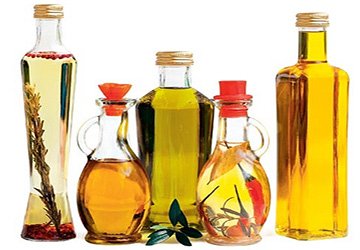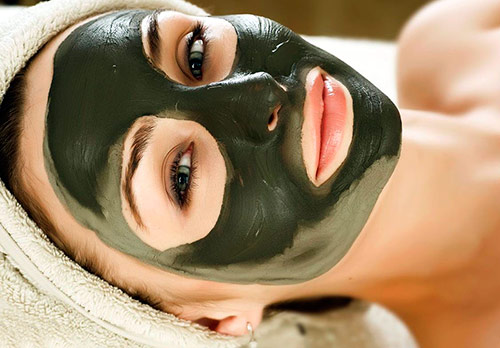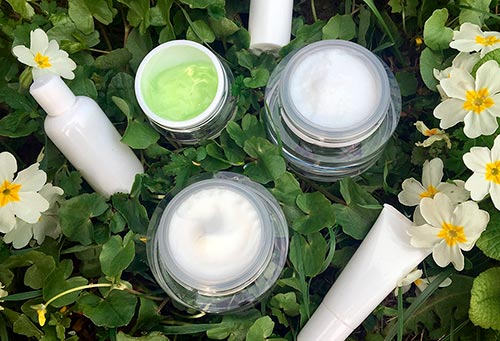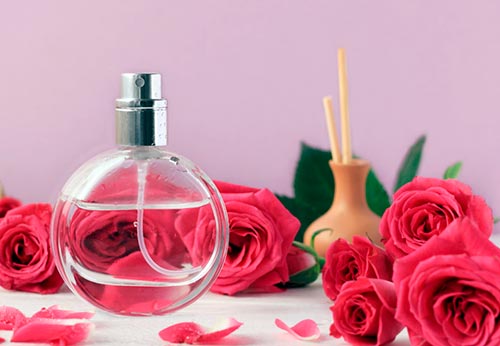Cosmetology
White clay for the face - properties and recipes of masks
White clay has a number of positive properties and is a popular ingredient in various cosmetics. Its main advantages are antiseptic properties, whitening and cleansing effect. It visibly tightens pores, eliminates acne and improves skin condition, giving it elasticity and firmness.
Cosmetical tools, which contain white clay, are effective and beneficial for oily skin. White clay is used to treat dermatitis and eczema.
White clay is often called kaolin or china clay. In addition to cosmetics, it can also be used in home masks. Ready-made masks are sold in a store or pharmacy. They are very soft in action and are suitable for problem skin care.
The clay contains silicon, which rejuvenates and tightens the skin, promotes the formation of collagen in tissues, increases the elasticity of small blood vessels, and improves complexion. The drying properties of clay, which are so necessary for oily skin, are due to the content of aluminum in it.
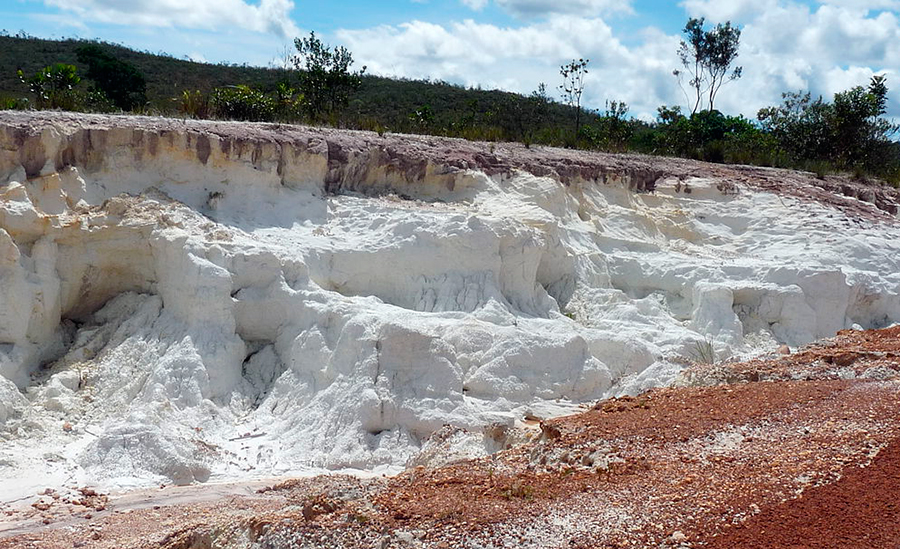
The main elements that make up white clay are Al2O3 and SiO2. However, clay contains a complex of trace elements such as zinc, potassium, sodium, calcium, copper, magnesium, and others are possible.
Products containing white clay can be used to care for oily and combination skin. White clay has a rejuvenating effect, smoothes wrinkles and age lines, evens out skin texture, and creates a lifting effect. Masks containing kaolin cleanse the skin well, removing dead cells and sebaceous deposits, and absorbing toxins.
All of the listed properties of white clay make it possible to use it to solve many skin problems.
In order to qualitatively solve these problems with products containing white clay, you must fully follow the recommendations indicated on them. Clay, like any other component, must be used in accordance with the instructions, because it also has medicinal properties. In cosmetics, kaolin is often used for oily skin.
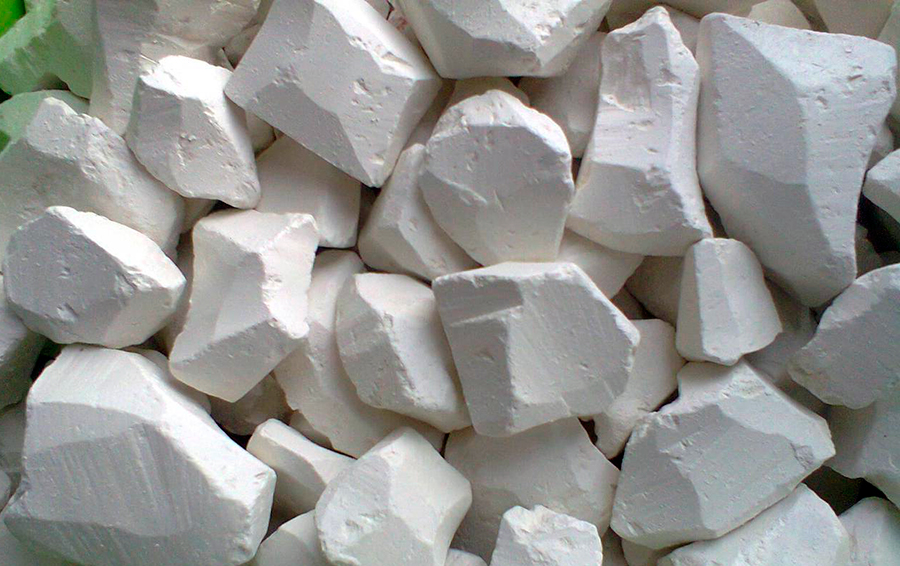
Features of using white clay
Kaolin can be combined with other ingredients to create interesting new recipes tailored to your skin's needs. Among the many different recipes, there are many that can be used for dry skin. In preparing masks with clay, sometimes you have to warm up the components. It should be noted here that kaolin reacts normally to heat.
The clay mask is applied, like any other, to clean skin along the massage lines. The action time is 10-15 minutes, but when using the clay for the first time, an allergy test must be done. The mask for sensitive skin should be kept for 3 - 5 minutes. If there are no undesirable effects, you can gradually increase the duration of action up to 10 - 15 minutes.
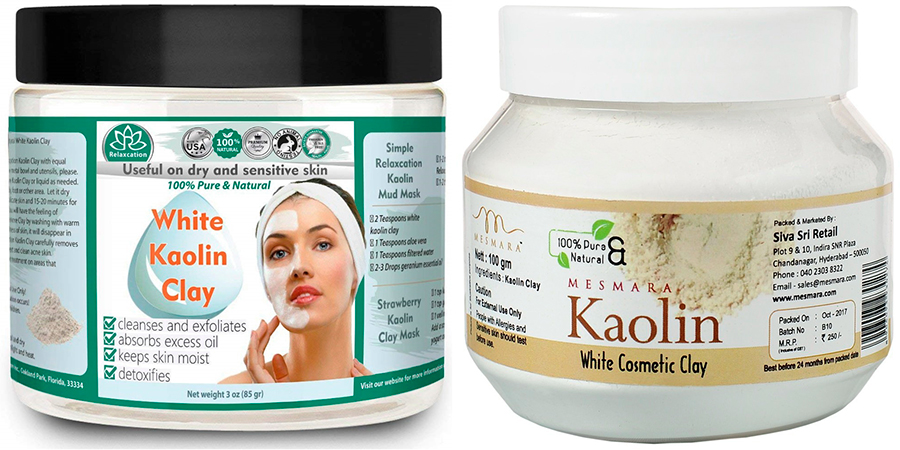
You should not leave the mask on the face until it dries, especially for dry skin, since in addition to the positive effects, you will get negative - dry the skin. Apply a thicker layer of clay to the face for 10 to 15 minutes. If the clay does not dry on the face, it is quite easy to wash it off with a foam or gel for washing.
Frequency of use: no more than 1-2 times a week, for dry skin 1 time.
The course of treatment is 10–12 masks, then a break - 1 month.
The course of treatment is 10–12 masks, then a break - 1 month.
White clay face mask recipes
There are many well-known and proven recipes that combine clay well with other ingredients. It remains only to choose the mask that will have the desired effect on your skin.
1. Classical white clay mask
Dilute the white clay with warm water (milk, herbal decoction) to the consistency of thick sour cream.This mask is best used for oily to combination skin.
2. Mask with the addition of fruit juices
Dilute clay (2 tablespoons) with warmed juice until thick sour cream.
3. Nourishing honey mask
Mix 1 tablespoon of clay with 2 tablespoons of warm milk and 1 teaspoon of slightly warmed honey.
4. Kefir mask for oily skin
Mix white clay (1 tablespoon) with low-fat kefir (3 tablespoons), finely chopped parsley and lemon juice (1 teaspoon).
5. Anti-inflammatory mask
Dilute 2 tablespoons of clay with 1 tablespoon of aloe juice, 1 teaspoon of still mineral water. The aloe leaf must be pre-conditioned in the refrigerator for 3 to 14 days.
6. Mask against pigmentation
Mix 2 tablespoons of clay with 1 tablespoon of cucumber or lemon juice. This mask can be used for oily skin.
7. Moisturizing mask
Mix clay with cottage cheese and sour cream. All in 1 tablespoon. Dilute with warm milk to the desired consistency. The mask can also be used for dry skin.
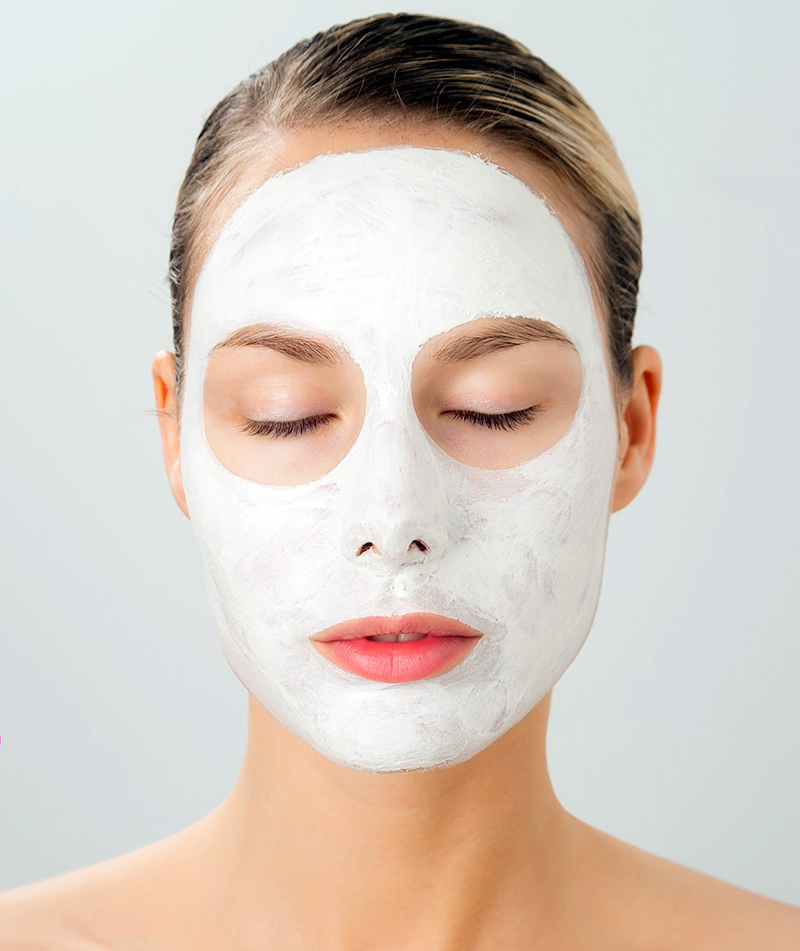
You can prepare herbal masks in combination with clay. Not only fresh herbs are suitable as ingredients, but also dried. Use linden blossom, lavender, chamomile, sage, parsley, and more.
In the preparation of the mask, one type of herb can be involved or several at once. We take chopped herbs in the amount of 1 teaspoon. The herbs are preliminarily poured with boiling water, insisted until cooled in a closed container, then filtered and diluted with the resulting decoction of clay to the consistency of thick sour cream.
Masks for dry skin can be done. But at the same time, various vegetable oils are added, which not only soften the skin, but also nourish, and also prevent drying and excessive tightening of the skin.
Masks with the addition of olive, peach oil, macadamia oil, avocado, jojoba are great ... In this case, the ratio of clay and oil is taken as 2: 1. Clay is pre-diluted with warm water, green tea, herbal decoctions, hydrolate, etc. in a 1: 1 ratio.
In such masks, you can add various juices that are good for dry skin, and essential oils. By the way, it is good to add essential oils to masks for any skin, 3-4 drops are enough. For example, tea tree oil or rosemary oil enhances the anti-inflammatory effect of the mask.
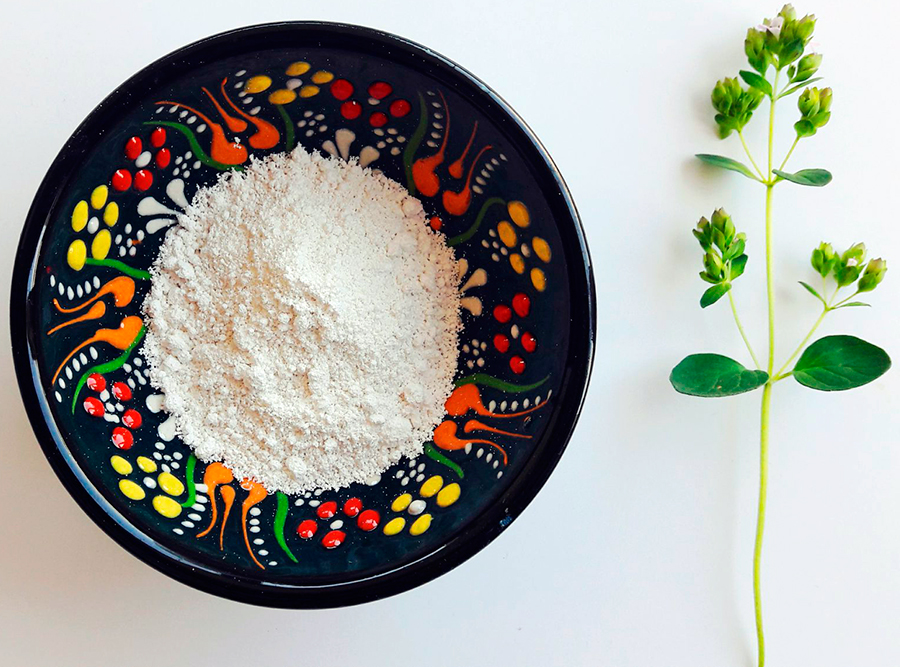
When using white clay, you can achieve a solution to various skin problems. But if you neglect these tips, then you can worsen the condition of the skin, to a greater extent it concerns sensitive and dry skin.
Recommendations that should be followed by everyone (for any skin).
1. Do not dissolve clay in metal containers.
2. The clay mask strongly tightens the skin, and therefore it should be applied to the face in a thick layer (so as not to dry out quickly), avoiding the area around the eyes and lips.
3. During the procedure, you should take the most comfortable position in a horizontal position, relax, do not walk, do not talk, do not laugh, otherwise the effect will be the opposite.
4. Do not keep the mask until completely dry. The maximum procedure time is 15 minutes. If some areas of your face dry out faster, you can moisten them with water or green tea.
5. Rinse off the mask carefully, soaking it, in no case rub your face.
6. After the mask, your face will feel fresh and toned, but possibly dry. Therefore, after the procedure, it is necessary to lubricate the face with cream.
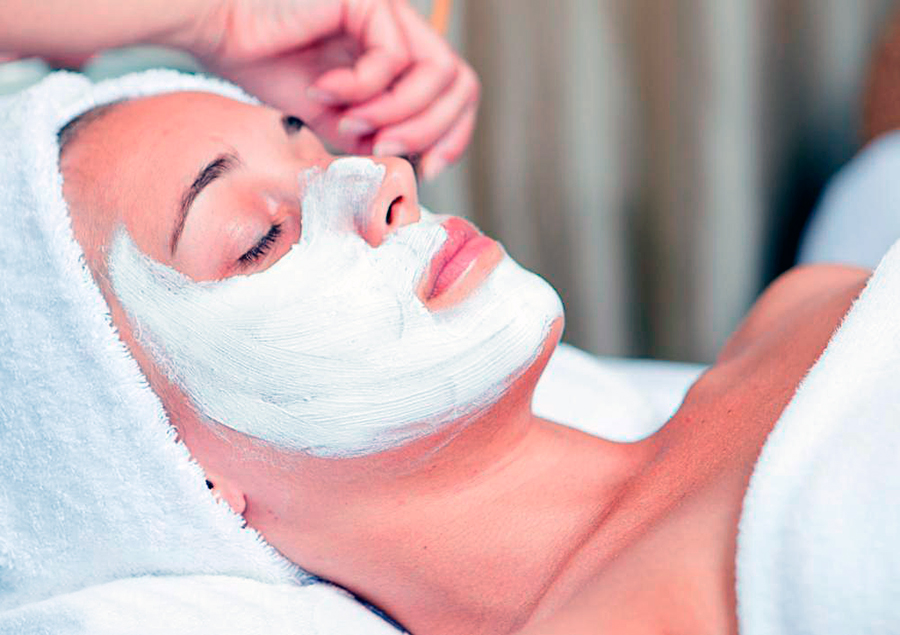
White clay, if it is of high quality, should be almost white in color, with no abrasive particles, that is, the finest grinding. It is used to treat skin diseases, it is contained as a component in various ointments, powders, pastes and other products.
Kaolin improves not only the condition of the facial skin, but also the hair, strengthens it and makes it more voluminous. However, it is also better to use it for oily scalp, in this case, clay normalizes the work of the sebaceous glands. Hair stays clean for longer. Clay is also an effective tool in anti-cellulite programs. But this is a different topic that requires a more detailed approach.
Comments and Reviews
Add a comment
Rating news
Shades of clothing that make women look younger
What shades of hair make women younger: rules and photos
Funny wedding dresses - photos and ideas
12 most expensive down jackets for the winter
How to look 25 at 40: tips from supermodels
Beautiful schoolgirls
Anti-aging haircuts and hairstyles for women
Fashionable skirts for autumn and winter
Fashionable women's trousers for the cold season
Fashionable and stylish sandals for summer 2024
Spring-summer 2024
 Fashionable dresses and tops with thin spaghetti straps
Fashionable dresses and tops with thin spaghetti straps
 Bandana tops: how to wear stylishly and beautifully
Bandana tops: how to wear stylishly and beautifully
 How to put together the perfect men's wardrobe for the summer
How to put together the perfect men's wardrobe for the summer
 Trendy shorts for spring-summer 2024
Trendy shorts for spring-summer 2024
 Fashionable skirts for spring-summer 2024: a guide to online shopping
Fashionable skirts for spring-summer 2024: a guide to online shopping
 The most fashionable dresses spring-summer 2024: styles and colors
The most fashionable dresses spring-summer 2024: styles and colors
 Fashionable total look 2024: image ideas and trends
Fashionable total look 2024: image ideas and trends
